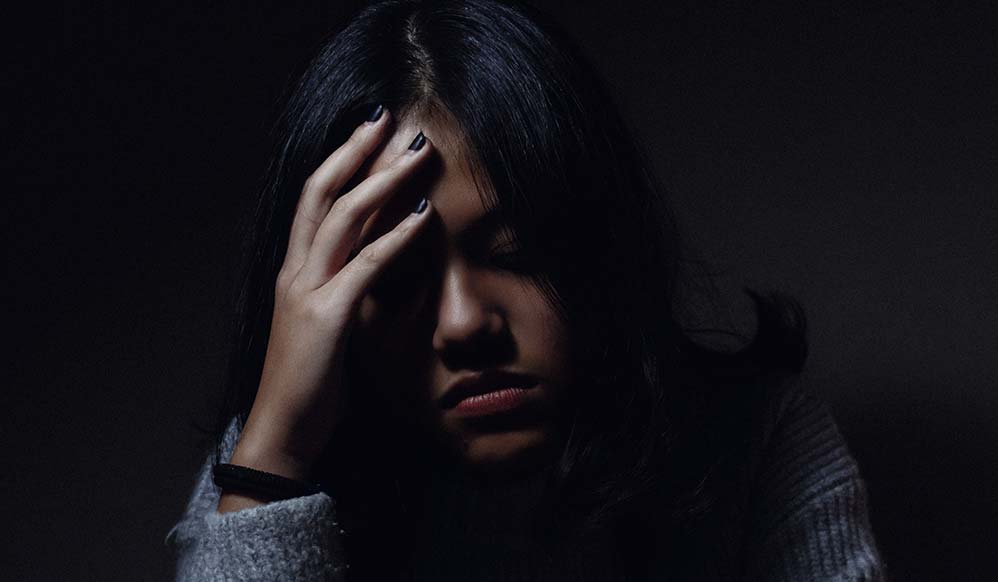This article was published on: 05/7/20 5:01 AM

None of us could have ever imagined that a virus that started so far away from the United States in December of 2019 could have ever escalated to the closing down of our entire country and most of the world. Well, here we are into May 2020 and the impact of the Coronavirus is affecting all of us in many different ways.
It is indeed a trying and emotionally challenging time for everyone. Most of us are experiencing wide ranges and fluctuations in our emotional states from moments of anxiety, fear, sadness and guilt, to feelings of hope and encouragement.
This is expected under the circumstances and there are helpful and adaptive ways of coping and of responding to our emotions. A recent study surveyed 1210 people from 194 cities in China to better understand the psychological impact during the initial stage of the COVID-19 outbreak on the general public. The study found more than half of those surveyed reported the psychological impact as moderate-to-severe and about one-third reported moderate-to-severe anxiety (Wang, C., et al, 2020). In addition, Wang, et al found that those who followed specific up-to-date and accurate health information and followed the recommended precautionary hygienic measures (i.e., hand washing, wearing a mask) reported lower levels of stress, anxiety and depression.
This study reveals some valuable information about the psychological impact of COVID-19. It shows that most people are experiencing higher levels of anxiety and depression and that following recommended social distancing and hygiene guidelines helps decrease the level of severity of those emotions. These are the basics. As we are all emotionally vulnerable at this time, it would helpful to take steps to lessen the psychological impact by maintaining optimal psychological well-being.
Optimal emotional well-being does NOT mean being without emotions or even intense emotions. For the sake of this article, “optimal emotional well-being” means understanding our emotions and responding to them in a helpful adaptive way.
Whether you believe in a Higher Power such as God, Mother Nature, the Big Bang… or some other theory of evolution, it is apparent that we were created with an innate ability to experience a wide array of human emotion. It’s a pretty amazing phenomenon. What would life be like without them? Not only would we likely not have survived as a species but without the ability to feel sadness, how would we know what/who we care about? If we weren’t able to experience anxiety we wouldn’t prepare and we wouldn’t be able to scan for danger. How would that job interview go if you didn’t feel any anxiety? Would you have thoroughly researched the company to prepare and practice for potential questions to appear a knowledgeable and motivated candidate for that job? Probably not.
What about fear? How is fear beneficial? If we weren’t able to experience fear our bodies would not prepare us to fight or flee from predators. If we never got angry how would we know to defend ourselves or respond in a helpful way if we were wronged? It’s probably not helpful to chase a fellow driver down and break out your tire iron to bash their car if they cut you off on the road. However, your anger might provoke you to honk your horn to protect yourself from harm. The consequences of the first response probably would not pan out well. You might get arrested, physically injured or at the very least fined and held responsible for the damaged vehicle. Honking your horn to alert the other driver or swerving out of the way would likely be the most adaptive response to your emotions. Can you see how paying attention to what our emotions are telling us and responding in the most adaptive way is critical in maintaining optimal emotional well-being?
Our emotions provide us with very important information about our world and drive our behaviors (Barlow, et al 2018). How can we use this valuable information to understand and manage our emotions brought on by COVID-19? Some common emotions during this time might be anxiety, sadness, possibly some guilt and maybe even anger. What information are these emotions providing for you? Some anxiety is appropriate as you, your loved ones and possibly your job may be at risk. You may be posed with the threat of becoming sick, losing a loved one or friend and financial loss (Ammirati, et al, 2020).
Try to consider the most adaptive way to respond to your emotions that will best help you meet your needs. For example, anxiety about becoming sick could motivate you to maintain appropriate hygienic measures. In this instance, your anxiety has alerted you to the possible threat of getting sick and helped you take helpful steps to prevent that from happening. Some people are experiencing some guilt-possibly for going out during a “stay at home” order or for possibly putting another at risk unknowingly. If so, what information is this emotion providing you? How can it help you evaluate your behavior and change it in the future? Maybe nothing but it’s important to pay attention and to evaluate (Ammirati, et al, 2020).
Many of us are feeling sad and/or angry. Maybe you’re sad because you can’t spend quality time with your friends and loved ones and aren’t able to participate in your pre-COVID activities (Ammirati, et al 2020). Maybe you’re angry about that. It’s understandable. These emotions can help you find new and creative ways to meet these needs. Maybe you could start social video chats with groups of friends, watch movies with friends via video, play games, host a video dinner party, happy hour, play date, etc. Now is a great time to get creative with home workouts. Research shows that exercise has a positive impact on mood.
Listen to your emotions and use them as a tool to evaluate your circumstances and to respond in a way that is most helpful. If you find that your emotions are too overwhelming or getting in the way of your quality of life it’s very important to reach out for professional help. You can find a therapist and other helpful resources at ADAA.org and at IOCDF.org.
References
Wang, Cuiyan, et al. “Immediate Psychological Responses and Associated Factors during the Initial Stage of the 2019 Coronavirus Disease (COVID-19) Epidemic among the General Population in China.” International Journal of Environmental Research and Public Health, vol. 17, no. 5, 2020, p. 1729., doi:10.3390/ijerph17051729.
Barlow, D. H., Farchione, T. F., Sauer-Zavala, S., Murray Latin, H., Ellard, K. K., Bullis, J. R., … Cassiello-Robbins, C. (2018). Unified protocol for transdiagnostic treatment of emotional disorders: therapist guide (second). New York: Oxford University Press.
Rachel Ammirati, PhD, Clair Cassiello-Robbins, PhD, & M. Zachary Rosenthal, PhD, (2020). “Understanding and Managing Emotions elicited by the COVID-19 Pandemic” & is based on content from the second edition of The Unified Protocol for Transdiagnostic Treatment of Emotional Disorders (Barlow et al., 2018)

 The Maryland Anxiety Center was founded by Andrea G. Batton, LCPC with a vision of creating a practice where clinicians and staff work cohesively and collaboratively with patients to provide optimal psychological care. The Maryland Anxiety Center specializes in the treatment of anxiety and related disorders from a cognitive behavioral perspective, the gold-standard and most effective treatment for such conditions.
The Maryland Anxiety Center was founded by Andrea G. Batton, LCPC with a vision of creating a practice where clinicians and staff work cohesively and collaboratively with patients to provide optimal psychological care. The Maryland Anxiety Center specializes in the treatment of anxiety and related disorders from a cognitive behavioral perspective, the gold-standard and most effective treatment for such conditions.